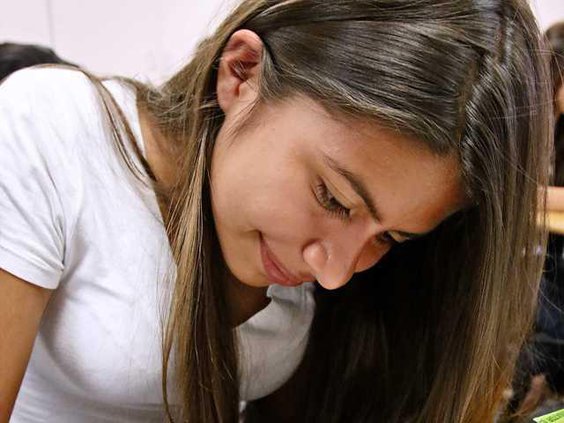Cursive writing is far from doomed in Manteca Unified classrooms under the $30 million Going Digital initiative.
That was a fear a number of parents expressed last school year when Manteca Unified rolled out the Going Digital endeavor that put a tablet computer in the hands of every one of the district’s 23,500 students.
If anything the Panasonic 3E devices employing Microsoft OneNote software that allows the use of handwriting or keyboarding should strength cursive writing skills to help sharpen students’ cognitive thinking ability.
“Cursive writing is crucial,” noted Manteca Unified School District Superintendent Jason Messer.
And the California State Board of Education couldn’t agree more. Cursive writing is part of the California Common Core Language Arts Standards for kindergarten through fifth grade. Some states have dropped cursive writing from curriculum requirements but California has not due to how it can bolster grasp of knowledge when used in conjunction with education technology.
Studies have also shown practicing cursive handwriting methods stimulate the brain’s neurons.
Cheryl Meeker, Senior Director of Elementary Education for Manteca Unfired noted the state standards require:
uThird graders to write legibly in cursive or joined italics, allowing margins and correct spacing between letters in a word and in a sentence.
uFourth graders to write fluidly and legibly in cursive or joined italics.
“Our devices allow students to master each of these standards by utilizing their stylus pens,” Meeker noted in an email. “Our teachers will continue to teach our adopted D’Nealian handwriting programs. They will also be phasing in our new technology tools to accomplish the task.”
Messer noted OneNote allows students to take notes on the devices using styluses.They are being employed in conjunction with various educational software programs the tablets use to help sharpen the seven areas critical to developing cognitive skills considered key to academic and occupational success: attention, working memory, processing speed, long-term memory, visual processing, auditory processing, plus logic and reasoning.
Messer said the tablets using OneNote significantly enhances a students’ ability to understand topics by allowing them to write in cursive — the fastest way for most people to take notes — and do it in a manner that allows them to underline key points, make what once were referred to as margin notes, and go back and edit down their notes to information that zeros in on the topic to help them to better understand concepts.
“It is all about communicating in the most effective manner,” Messer said of the marriage of cursive writing with tablet technology.
Learning to keyboard isn’t haphazard either.
Meeker noted state standards require:
Third graders, with guidance and support from adults, to use technology to produce and publish writing using keyboarding skills as well as to interact and collaborate with others.
Fourth graders learn to use technology, including the Internet, to produce and publish writing and demonstrate sufficient command of keyboarding skills to type a minimum of one page in a sitting.
Fifth graders to demonstrate sufficient command of keyboarding to type a minimum two pages in one sitting.
Sixth graders to demonstrate sufficient command of keyboarding to type a minimum of three pages in a sitting.
Meeker noted the district’s devices also allow students to master keyboarding standards as well.
CURSIVE WRITING ROCKS
When wed with tablet technology it helps students grasp concepts



